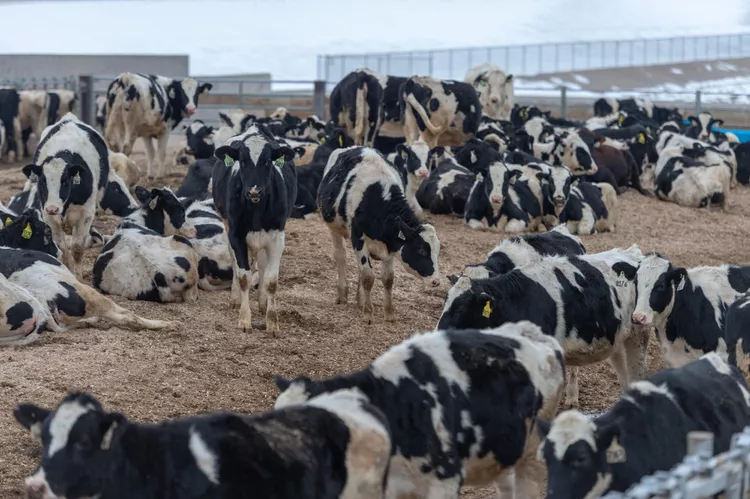The USDA said there is no risk to the nation’s pork supply from the Oregon case and that the risk...
Bird Flu Found in Dairy Herds in Five States

Bird flu, which killed more than 82 million birds in U.S. domestic flocks in the past two years, has recently appeared in dairy herds in Idaho, Kansas, Michigan, New Mexico and Texas, according to federal officials. USDA says the outbreaks, affecting a relatively small number of cattle, are not expected to affect milk supply or prices at the grocery store. Pasteurization would assure the safety of milk and dairy products.
Wild birds are believed to be the sources of the highly pathogenic avian influenza (HPAI) virus, just as they are regarded as spreading the virus among domestic flocks. The HPAI outbreaks began on February 8, 2022.
“Spread of symptoms among the Michigan herd also indicates that HPAI transmission between cattle cannot be ruled out,” stated USDA. However, initial tests found no changes to the virus that would make it more transmissible to people.
In dairy cattle, HPAI manifests itself in reduced milk production and low appetite and primarily among older cows. The animals tend to recover in 10 to 14 days.
Early last week, the USDA, FDA and CDC confirmed HPAI in two dairy herds in Texas and two dairy herds in Kansas. At the end of the week, they confirmed the viral disease in a Michigan dairy herd that received cattle from Texas and said “presumptive positive test results” found HPAI in herds in Idaho, New Mexico, and again in Texas.
The Idaho dairy farm where the infection was detected had recently bought 105 head of cattle from Texas, according to state veterinarian Scott Leibsle. He suspected cow-to-cow transmission or transfer through shared equipment as the cause, according to Capital Press. HPAI was found in cattle already on the farm, which were housed separately from the new stock.
HPAI previously was found among wild mammals, such as red foxes. On March 20, Minnesota animal health officials said HPAI was found in a juvenile goat that shared space, including a water source, with poultry.
Dairy farmers were advised to practice biosecurity, which includes limiting outside access to the farm, using a footbath to clean footwear before entering barns, minimizing movement of animals, checking herds for signs of illness, and isolating sick cattle.
There are nearly 8.9 million dairy cows in the 24 leading dairy states, according to USDA data. They produced 17.4 billion pounds of milk in February. California, Wisconsin, Texas, Idaho and New York State are the largest producers.
EDITOR’S TAKE:
What next? Just when we thought the bird flu epidemic was waning, this latest discovery in dairy cattle rears its ugly head. We trust that between USDA and State Ag Veterinarians they will keep a lid on this situation. There appears to be a common thread leading back to Texas. If that is the case, you can be assured they will either start testing all cattle crossing state lines or simply ban cattle from leaving the state for a period of time. In addition, all veterinarians across the country will be on alert to spot this disease. It does appear that cattle may suffer short-term consequences, but recover in a week or two. It is unlikely this latest outbreak will seriously impact the output or finances of dairy farmers in your area. That’s why we encourage you to continue marketing through AgTruckTrader.com®. Chances are they will still be looking for a truck or two!








